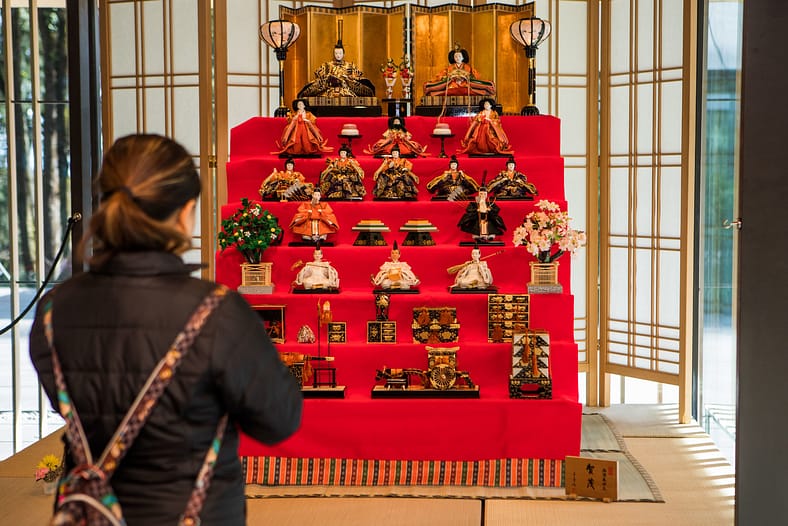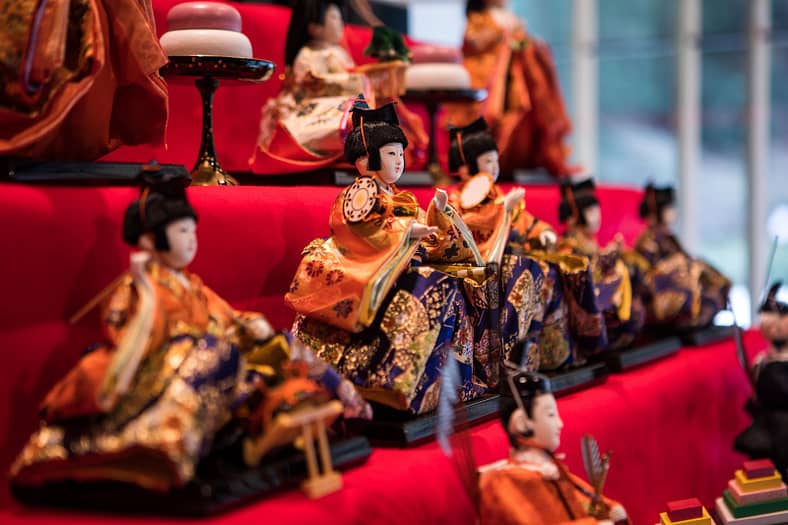
Hina Matsuri, also called Doll’s Day or Girl’s Day, is a special time to pray for the growth and happiness of girls. It is also called Momo no Sekku, or “Peach Blossom Festival”. Visitors can view and take photos with a traditional display of dolls in the Cathy Rudd Cultural Corner representing the Emperor and Empress with members of the Imperial Court. An ikebana arrangement with peach blossoms will also be on display all day.
Come see a musical performance by Takohachi Collab. Project, a duo of a shamisen player and singer, from 10:45 -11:15 am and again at 11:45 am – 12:15 pm in the Cathy Rudd Cultural Corner.
We will have three Ikebana workshops in the Yanai Classroom throughout the day, hosted by Carolyn Alter, Head Teacher of the Ohara School of Ikebana’s Oregon Chapter:
1st Woskshop: 11:00 am-11:30 am
2nd Workshop: 12:00-12:30 pm
3rd Workshop: 1:00-1:30 pm
Each Ikebana workshop can have 18 attendees on a first come first served basis.
Hina Matsuri is said to have originated in the Heian period (794-1185), a time when people believed that dolls had the power to drive away evil spirits. Paper or straw hina dolls were set afloat on boats down the river and out to sea, sweeping away troubles and bad spirits. This tradition called nagashi bina still takes place in some regions in Japan.
The tradition of displaying hina dolls at home began during the Edo period (1603-1868) and still takes place today. Traditionally, parents or grandparents purchase a set of hina dolls following the birth of a girl. In some instances, hina dolls are passed down from previous generations.

Hina dolls are displayed on a tiered platform (hina dan) covered with a red carpet (dankake). The top tier holds the two imperial dolls. The Emperor doll holds a ritual baton and the Empress a fan. The following tiers hold their attendants: the second tier holds three court ladies (san-nin kanjo). Each lady holds ceremonial sake equipment. The third tier holds five court musicians (gonin bayashi) each holding a musical instrument except the singer who holds a fan. The fourth tier holds two ministers (udaijin and sadaijin), the one on the right (Minister of the Left) being older and higher ranking. The three court attendees (sannin jogo) on the fifth tier each show angry, merry, and sad faces.